Cavity nesters clearly have some advantages in raising their
young underground but there are also a number of challenges they must face to
fledge healthy chicks.
In one of my favorite photographic locations two species of
Bee-eater and one kingfisher species nest in the ground. In this blog I will
detail the challenges that one of these species; the Blue-throated Bee-eater
has to overcome to propagate their species. Blue-throated Bee-eaters are not
endemic to Peninsular Malaysia and several hundred birds arrive in mid-February
to a Moto-cross track that occupies several acres of land to raise their
chicks. Considerably less numbers of Chestnut-headed Bee-eaters and several
pairs of White-throated kingfishers, all cavity nesters, also choose the same
site to nest in. There are other similar open areas in the vicinity where
different pairs of Kingfisher choose to nest but the Bee-eaters single-mindedly
prefer this arena.
This has been detailed in a previous blog but can be
summarized as follows; the adults arrive in pristine condition from the North
and are already paired off. They spend
some time settling in and hunting for flying insects before they excavate their
nest cavities, which are either in banks or on the flat ground. Mating occurs
shortly after or during hole-drilling. Mating occurs after the female assumes a
‘mount me’ posture adjacent to her partner. The eggs are laid and incubation
takes approximately 28 days.
 |
| Adults arrive in February in prime condition |
 |
| They are adept hunters of flying insects |
 |
| The softer earth on banks is excavated |
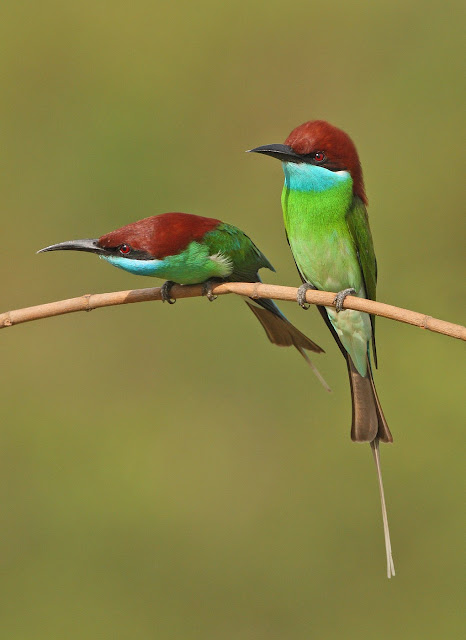 |
| The female adopts a 'mount me' posture to initiate mating |
 |
| Copulation is a vigorous activity |
The parents, non-breeding uncles and aunties plus
adolescents from the previous nesting feed the current latest brood. Current
evidence suggests that there might be back-to-back nesting with the chicks from
the first brood assisting in the feeding of their younger brothers and sisters.
The chicks fledge around 28 days after hatching. They are a similar size to the
parents but have a dark green head, a blue-green throat and mainly green back
feathers. The elongated tail feathers are absent also at this stage.
 |
| An adult delivering food to the nest |
 |
| An adolescent (remnant green feathers) delivering food |
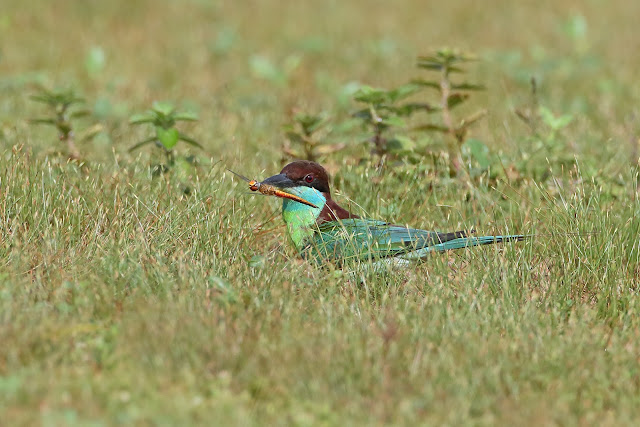 |
| Nests are also excavated on flat ground |
 |
| Delivering to a pre-fledgeling chick |
 |
| An adult with two fledged chicks |
There are a number of external forces the nesting process has
to survive for healthy chicks to emerge from under the ground. They are as
follows;
Nesting in cavities in the soil, which is sometimes damp, is
ideal for various parasites to flourish. The Bee-eaters spend a considerable
time preening and often adopt rather goofy postures in in full sunlight. This
is apparently to bring the parasites to the surface on their feathers so that
they can be more readily removed.
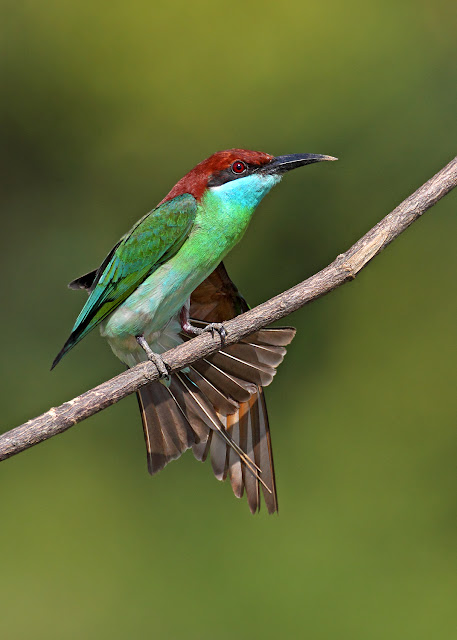 |
| Adults regularly stretch and preen to remove parasites |
 |
| Flushing out external parasites utilizing sunlight |
Termites live
underground and can sometimes choose to occupy the same cavity as the chicks.
Twice I have seen chicks leave the nest cavity prematurely when driven out by
termite infestation.
Cows. In Malaysia landless
owners drive small groups of cows into favorable grazing grounds. The cows can
trample hole entrances and drop excrement in unfortunate places.
Wild Boars. I have
seen a family of 8 wild boars in the nesting arena and evidence of their
trampling and surface excavations is often observed in and around active nests.
 |
| Wild boar; furtive and destructive |
Raptors. The area
appears to be rich in raptors. Crested Serpent eagles; Brahminy Kites and
Changeable Hawk-eagles often fly by and occasionally swoop on a target in the
nesting arena. Perched Bee-eaters however have a good selective surveillance
and take to the air if threatened.
 |
| A Brahminy Kite in the nesting area |
 |
| A Crested Serpent Eagle overflies the nesting arena |
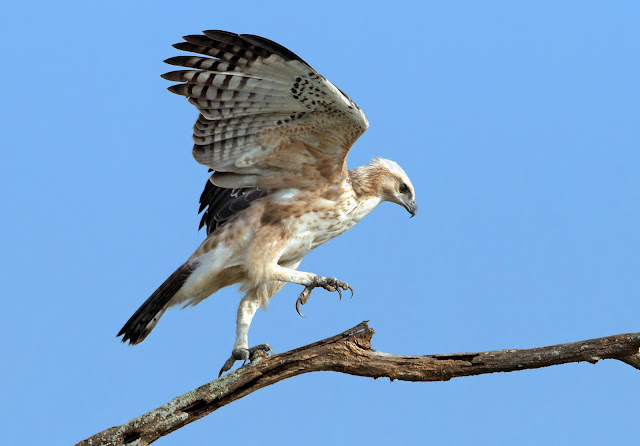 |
| A changeable Hawk-Egle in the vicinity |
 |
| Collective surveillance of a raptor |
Snakes. Snakes are
terrestrial hunters and must represent a constant and major threat to young
chicks confined within nesting cavities.
 |
| A snake at the entrance of a nest hole |
Dogs. Wild or
semi-wild dogs are fairly ubiquitous in many areas in Malaysia and indeed
Singapore. They are not a direct threat to the birds but can randomly excavate
large holes in nesting areas.
Intra- and
extra-species disputes.
There is competition for nesting and perching sites and
intra-species squabbles occur. The resident Kingfishers are mainly tolerant of
the Bee-eater multitude but occasionally fly aggressive sorties to clear an
area of foreign species.
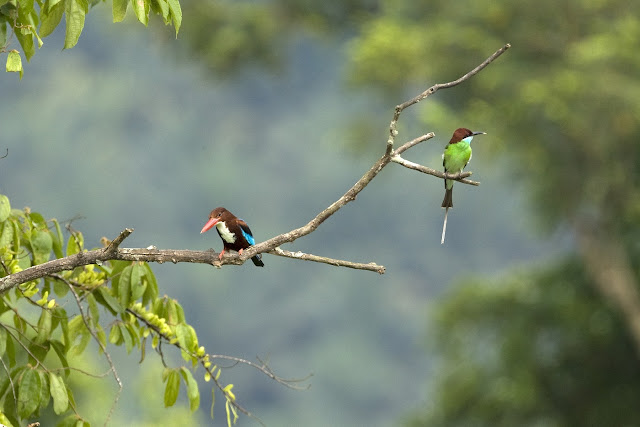 |
| Mostly a tolerant co-habitation |
 |
| Territorial disputes are relatively common but non-lethal |
Humans. The main threats
to many bird species are humans and their activities. In the case of the
Blue-throated Bee-eaters nesting in the described area most of the human
activity that is a threat to successful nesting is done in complete ignorance
of the presence or status of the bee-eaters.
Bird Poachers. On several occasions illegal poaching has been
seen to take place in the nesting arena. The Bee-eaters appear not to be the
targets but may suffer collateral damage from traps and snares.
Moto-cross riders. The track has been active for over a decade
and the riders have every right to be doing what they do as the area was
modified and set aside for their chosen activity. I have spoken to several
riders and they have seen holes but are unaware of what avian species or
process has constructed them. Recently the track has been renovated and this
has caused problems when nest active nest holes have been completely buried.
Sadly one adult arrived with cargo and found the nest entrance had vanished. It
spent the next few hours desperately digging to locate the chicks.
 |
| Renovations to the track covered the nest-hole at the centre of the image. The chicks escaped |
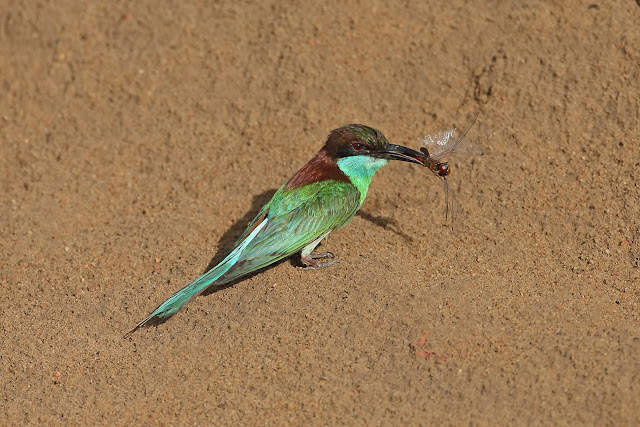 |
| The target nest hole was covered by track renovations |
 |
| A desperate effort to locate the nest cavity. |
Radio-controlled cars. For a period of time some young men had
races with scale model, petrol-powered and radio-controlled cars that were
whizzed around the motor-cross track and adjacent areas.
Local Youths. The area is a large playground to a small number
of local boys who ride their bicycles over the bumps and across the pasture.
Turf-cutters. There is a small industry whereby turf from
grassy fields is cut for grassing the verges of highways and byways. The turf
is cut with a specialized hoe and the cutters stack the clods in piles awaiting
pick-up by small trucks. Sometimes the piles are laid directly on top on active
nests.
 |
| Circular patches in the foreground are the result of targeted turf removal |
Re-development. Although this has not currently occurred is a constant
threat. The adjacent land has just had a large factory constructed on it and
there is an advancing phalanx of new houses not far away heading in the
direction of the nesting site. The greatest hope of survival of this unique
area is for the moto-cross riders and current owner to maintain the status quo.
Despite the trials and tribulations of cavity nesting it is
heart-warming to see chicks actually fly out of nest holes after a quick glance
at their new world. More interestingly in recent weeks I have reason to believe that the parents that successfully raise an early brood do a repeat nesting. Late nests have been seen to be fed by birds that have mainly green heads and other indications of an early stage of transition to the adult coloration. In essence the second batch of chicks are being fed by their brothers and sisters. This is a further indication that despite outside forces successful parent are prepared to raise a second brood in the same location.































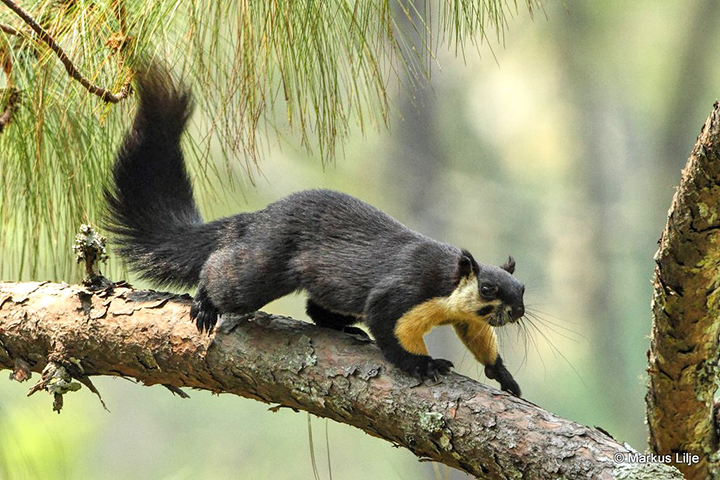
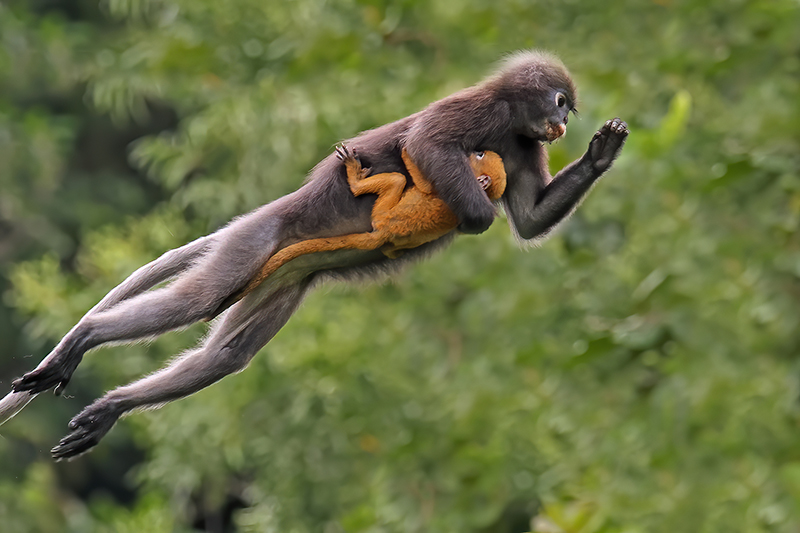

Always a delight to see your post and photos. Well done, Graeme.
ReplyDeleteSooooooo nice pictures. I enjoy a lot. You must pay a lot of efforts on them. Well done, Graeme.
ReplyDelete